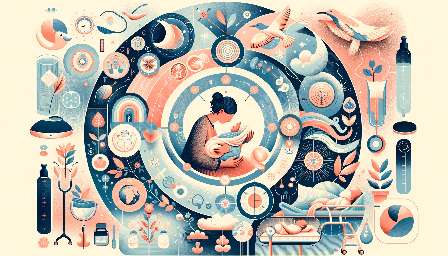Pregnancy and postpartum are transformative periods in a woman's life, marked by numerous physical changes. Understanding these changes is essential for expectant mothers as they prepare for childbirth and navigate the postpartum experience. This comprehensive guide will explore the physical transformations that occur during pregnancy and postpartum, offering valuable insights into the body's adaptation and the steps to prepare for childbirth.
Physical Changes During Pregnancy
Throughout pregnancy, a woman's body undergoes a series of remarkable changes to accommodate the growing fetus and prepare for childbirth. These changes can be categorized into several phases, each of which plays a crucial role in supporting the development of the baby.
First Trimester
During the first trimester, the body begins to adjust to the presence of the developing embryo. Hormonal changes contribute to symptoms such as morning sickness, breast tenderness, and fatigue. The uterus also begins to expand, putting pressure on the bladder and causing increased urination. Additionally, the body experiences an increase in blood volume and changes in the cardiovascular system to support the needs of the fetus.
Second Trimester
As the pregnancy progresses into the second trimester, the physical changes become more noticeable. The uterus continues to expand, leading to the visible growth of the baby bump. Women may experience skin changes, such as the darkening of the areolas and the appearance of stretch marks. The body undergoes significant musculoskeletal changes to accommodate the increasing weight of the uterus and the baby. Additionally, the hormonal fluctuations can impact emotional well-being and contribute to mood swings.
Third Trimester
The third trimester is characterized by further growth of the fetus and the completion of preparations for childbirth. The expanding uterus puts pressure on the internal organs, leading to symptoms such as shortness of breath, constipation, and heartburn. Women may also experience swelling in the hands and feet due to fluid retention. The body continues to produce hormones that aid in the relaxation of ligaments and joints, preparing the pelvis for labor and delivery.
Preparing for Childbirth
Understanding the physical changes during pregnancy is essential for preparing for childbirth. Expectant mothers can take proactive steps to support their bodies and prepare for the birthing process. Prenatal education and childbirth classes provide valuable information on labor, delivery, and postpartum care. Additionally, engaging in regular physical activity and practicing relaxation techniques can help alleviate discomfort and prepare the body for the challenges of childbirth.
Childbirth
Childbirth marks the culmination of the physical changes that occur during pregnancy. The process of labor and delivery is a unique and transformative experience, characterized by the coordinated effort of the body to bring the baby into the world. Understanding the stages of labor, practicing breathing techniques, and having a birth plan in place can empower women to navigate childbirth with confidence and readiness.
Physical Changes During Postpartum
Following childbirth, the body undergoes a period of recovery and adjustment known as the postpartum period. The physical changes that occur during this time are essential for healing and adapting to the demands of motherhood. The uterus contracts and returns to its pre-pregnancy size, a process known as involution. Postpartum bleeding, or lochia, occurs as the body sheds the excess uterine lining. Additionally, the breasts undergo changes to support lactation and breastfeeding.
Postpartum Care
Postpartum care is vital for supporting the body as it transitions from pregnancy to motherhood. Rest, nutrition, and emotional support are crucial elements of postpartum care. New mothers can benefit from guidance on breastfeeding, managing postpartum discomfort, and seeking assistance for any physical or emotional challenges that arise. Seeking postpartum care and follow-up appointments with healthcare providers ensures that the body's recovery is monitored and supported.
Conclusion
Pregnancy and postpartum are profound experiences that bring about significant physical changes. Understanding these transformations is key to preparing for childbirth and managing the postpartum period effectively. By acknowledging the body's capabilities and implementing supportive measures, expectant mothers can navigate pregnancy, childbirth, and postpartum with confidence and well-being.


